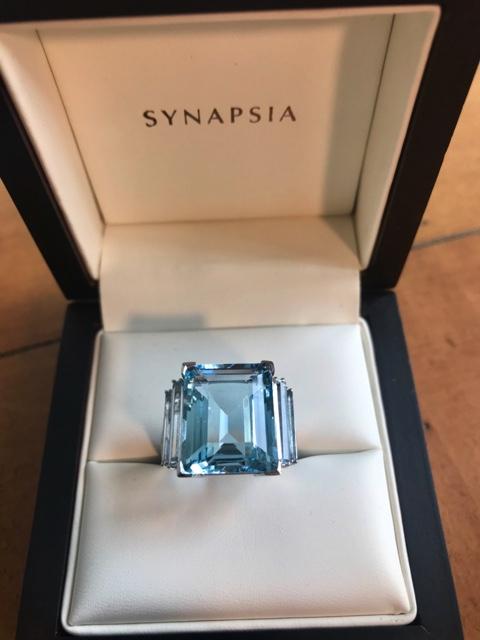Description
The birthstone of the month of March is Aquamarine, which belongs to the prestigious beryl category of gemstones.
This variety comes in colorless with goshenite, pink with morganite, yellow with heliodor and green with emerald.
Aquamarine owes its blue-green to blue color to the trace amounts of iron it contains.
Meaning and history
Its name comes from the Latin aqua (water) and marina (marine) because of its ocean-like colour. It was given its present name of Aquamarine in the 16th century.
Legend has it that ancient sailors wore Aquamarine as a talisman, using it to protect themselves from danger on sea voyages, which is why it was once called the "sailor's stone". The Sumerians and Egyptians also had great admiration for this fine stone, as they saw it as a symbol of eternal youth.
Even today, it is a variety of mineral of major importance in jewellery.
Where can I find it? Origin
Its most famous deposits are found :
In Brazil: the largest crystals have been extracted from the Minas Gerais region.
In Pakistan, Australia, Asia (Burma, China, India, Sri Lanka), Africa (Kenya, Madagascar, Mozambique, Namibia, Nigeria, Tanzania, Zambia, Zimbabwe), the United States and Russia.
Hardness & Maintenance
With a hardness of 7.5 to 8 on the Mohs scale, this March birthstone is durable enough to be worn on a daily basis. Caring for this gem is easy. Use warm water, mild dish soap and a toothbrush to scrub behind the birthstone where dirt can collect. Ultrasonic cleaners and steam cleaning are generally safe options as long as there are no fractures or liquid inclusions in the gem.
The ideal metal to go with your aquamarine
Aquamarines go perfectly with white metals (white gold or platinum), which enhance their colour and make them stand out. But you can also combine it with rose gold. Aquamarines often go less well with yellow gold.
Properties
As soothing as a calm sea at the end of the day, Aquamarine helps the mind to relax. It is a stone that helps combat stress and encourages positive thoughts. Its vibrations reduce anxiety and make way for inner peace.
Formerly used to make crystal balls, Aquamarine is associated with a more lucid and perceptive mind. It strengthens the intellect and memory. This is why it is often used by students before exams. Aquamarine is particularly good for oral examinations, as it makes speaking and communication easier. It can also be used to combat stage fright by those who often appear on stage.
Aquamarine strengthens feelings of friendship and love. It is a gift for engagements and helps to strengthen couples. It makes communication softer, making relationships more sincere and easier to maintain.
